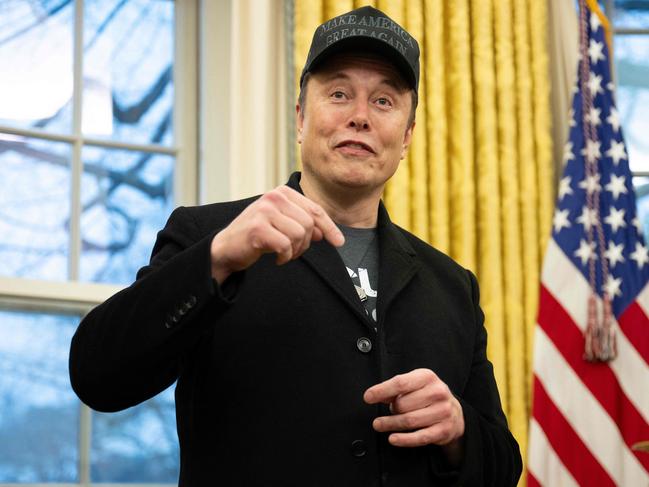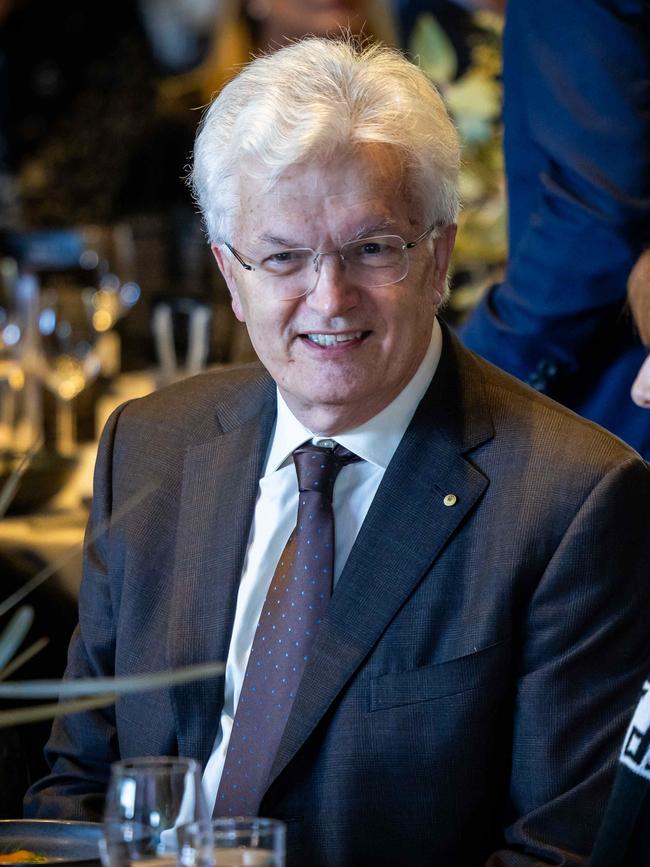Canberra’s top bureaucrats best paid in the world

Elon Musk may well do great harm as he cuts his way through fat, sinew and bone, but there is something to be said for shaking the Forbidden City of the eternal administrative state to its foundations.
Even if an incoming Australian government had the will, the same shock and awe could not be replicated here, but maybe it’s time hard questions were asked about the value taxpayers get from the public service, particularly the mandarin class.
Any review of that class should begin with the untouchable brass.

Who do you think gets paid more, the Chairman of the Joint Chiefs of Staff in the US or his Australian counterpart, the Chief of the Defence Force?
Before we get to the cash, let’s compare the jobs. The top gun in the US leads strategic planning and joint force operations and is principal military adviser to the President, Defence Secretary and National Security Council. The US has about 1.3 million active-duty personnel and 811,000 reserves, operates more than 750 bases in more than 80 countries and is backed by a $US1.4 trillion budget.
Australia’s most senior officer oversees military planning and operations and advises the Prime Minister, Defence Minister and the national security committee. The force he commands has about 58,000 active personnel and 21,000 reserves, and operates primarily in the Indo-Pacific on a budget of $58bn.
The US has 13,043 aircraft to our 327. It has 440 ships, including 11 aircraft carriers, and 70 submarines. We have 44 ships, zero aircraft carriers and six ageing submarines.
But rejoice! There is one metric where Team Australia thumps the Yanks and the rest of the world. In our dollars the American defence boss gets $382,000 a year and, according to Defence’s latest annual report, Australia’s chief got $1,135,524 in 2023-24.
Try to get your head around that. Try to mount a coherent argument as to why Australia should boast the highest paid military man in the world, one who gets to within a rounding error of earning three times the pay of his US counterpart.
Now let’s run the ruler over our federal public service chiefs.
Australia’s top mandarin, the secretary of Prime Minister and Cabinet, was paid $1,086,846 in 2024. Here it’s hard to draw a straight comparison with the US because the structure of government is different, but let’s use the White House chief of staff as a measure.

That job involves handling the daily operations of the West Wing and overseeing the executive office of the President, which involves working with cabinet secretaries to run the government. And recall the President is Trump, which adds a degree of difficulty to the job that’s not covered by management textbooks written in this dimension. The pay for this impossible task is $294,813.
Looking elsewhere, Britain’s highest ranking civil servant is the cabinet secretary. That role comes with a pay packet of $400,274.85.
For reasons beyond mortal reckoning, Australia’s top public servant is apparently worth more than double his British counterpart and well over three times more than the woman who owns one of the most complex jobs in the history of government.
A rung down from the head of PM&C are the secretaries of Treasury, Defence, Health and Aged Care. They each take home $986,120 a year. The lowest paid of the 16 departmental heads gets a miserly $809,130. That is still more than $200,000 more than the Prime Minister ($607,471).
Search the globe and it turns out Australia has the highest paid senior bureaucrats in the world. The only serious contender for that title is Singapore. Why on earth should this be the case?
This is not a novel question. It has been raised in these pages by former Treasury assistant secretary David Pearl, who noted: “Incredibly, over 100 public servants earn more than the cabinet ministers they serve (the latter get $389,000).”
Former public service commissioner Andrew Podger believes the pay of top bureaucrats is too high and based on “spurious market comparisons” with the private sector. Enter senator Jacqui Lambie, who has vowed to introduce a bill to “cut and cap” departmental secretaries’ salaries.
So here is an election year thought for both parties: pledge to halve the wages of departmental heads and freeze them until they conjure ideas that lift the suffocating regulatory burden of government. This policy would have the benefit of being both popular and morally defensible while only trimming the lifestyle of the administrative elite.
The head of PM&C would have to stagger by on a wage of $543,423. No one would weep. The rule should be that no public servant gets more than the Prime Minister and no departmental head gets more than their minister. Let’s be honest, this will not deliver big budget savings but that is not the point. The point is equity and the demonstration effect.
It may just help salvage some credibility for a bureaucracy that is completely out of touch with the lives of the people they are meant to serve. Yet could even this token hillock be won, given the Prime Minister does not have the sweeping powers of an American president? Would this idea die in parliament?
A former Finance deputy secretary, Stephen Bathos, believes the Prime Minister could act without parliament because secretaries are employed on contracts.
“The simplest path would be through agreement with each individual secretary,” Bathos says. “The easiest and least noisy way to do this would be as each contract comes up for renewal.”
Any secretary who violently disagreed with the idea could resign and test the idea that they will make more in the private sector.
A few more thoughts. Every departmental head should live in Canberra. No one should be paid $34,500 extra a year because they nominate their principal place of residence as some other city. Normal people routinely have to move cities for work.
No one should be entitled to “12 business class return airfares between Canberra and the capital city nearest the secretary’s principal place of residence”. The mob pays to visit their families out of the wages they earn.
There should be an end to business class air travel inside Australia. The travel allowance for visiting other cities ($426 to $508 a day) should be reviewed and reduced.
No senior bureaucrat or defence brass should get a gong for doing their day job. There should be a limit on the amount of post-career gigs former senior bureaucrats are given by their old departments. Senior defence force personnel should be barred from taking jobs in the defence industry within 24 months of leaving their post.
It’s not in the same league as the war declared by the Musketeer but it is still a worthy skirmish.



There is much ado in Washington DC as Donald Trump’s CyberReaper drops his scythe on the bureaucracy.